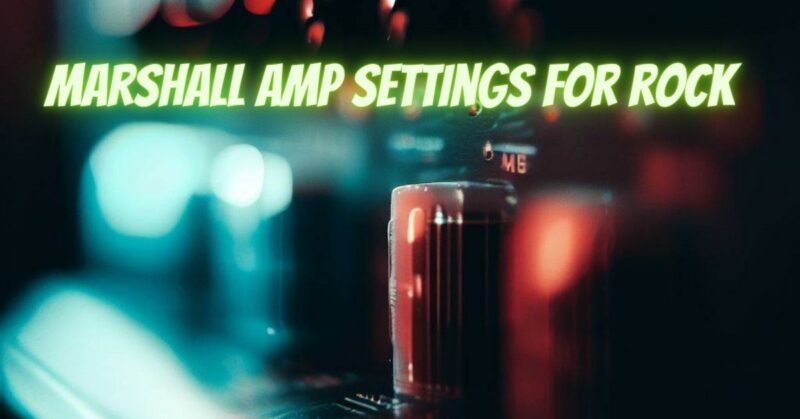Marshall amplifiers have been synonymous with classic rock tones for decades, providing guitarists with the iconic sound that has shaped the history of rock music. To achieve that classic rock sound, precise adjustments to your amp settings are essential. In this article, we will explore the optimal Marshall amp settings for rock guitar, allowing you to evoke the spirit of rock ‘n’ roll through your instrument.
- Select a Classic Amp Model
Start by choosing a classic Marshall amp model that is known for its rock tones. Amps like the Marshall Plexi, JCM800, or DSL series are popular choices for classic rock sounds. These amps offer the warm and dynamic tonal qualities that define the classic rock genre.
- Set the Clean Channel
Begin with the clean channel on your amp. For classic rock, you’ll want a clean tone that serves as the canvas for your overdrive. Set the volume at a level that maintains clarity without overpowering your signal.
- Dial in the Overdrive
To achieve that signature rock crunch, gradually increase the gain or volume control on your amp’s clean channel. The goal is to find the sweet spot where your playing dynamics start to push the amp into a mild overdrive, giving you that expressive and dynamic sound that’s characteristic of classic rock.
- Shape the EQ
The EQ settings are crucial in shaping your rock tone. For classic rock, start with a slightly scooped midrange (lower the mid frequencies) to achieve a punchy and bright sound. Boost the bass and treble frequencies to add warmth and presence to your tone. As you dial in your EQ, be sure to listen carefully to maintain a balanced and harmonically rich sound.
- Utilize the Presence Control
The Presence control on your Marshall amp adds clarity and brilliance to your tone. Adjust the Presence setting to add definition to your sound without making it too harsh or bright.
- Experiment with the Power Tubes
If your Marshall amp has multiple power tubes, you can experiment with biasing them to get a different feel and response. A “cold bias” can result in a tighter and more focused sound, while a “hot bias” can lead to a smoother and more saturated tone.
- Use Pedals Sparingly
Classic rock tones are often achieved with minimal use of pedals. Instead, focus on the natural overdrive of your amp and your guitar’s volume and tone controls to shape your sound. However, you may consider using a mild overdrive pedal to push your amp further into overdrive territory for solos or more aggressive sections.
- Experiment with Guitar Pickups
The choice of guitar pickups can also impact your rock tone. Single-coil pickups can provide a brighter and twangier sound, ideal for some classic rock styles, while humbuckers can deliver a warmer and thicker sound, suitable for heavier rock tones.
Achieving the perfect Marshall amp settings for rock guitar requires a careful balance of gain, EQ, and power tube adjustments. Begin with a classic Marshall amp model and access the clean channel to set the foundation for your rock tone. Gradually increase the gain to achieve a dynamic overdrive that responds to your playing. Shape the EQ to achieve a punchy and bright sound, and utilize the Presence control to add definition.
Remember to experiment with different power tube settings and consider the impact of your guitar pickups on your rock tone. With these optimal settings and your expressive playing, your Marshall amp will become the key to unlocking classic rock tones, allowing you to create the timeless and powerful sounds that define the genre. Let the music rock on!

